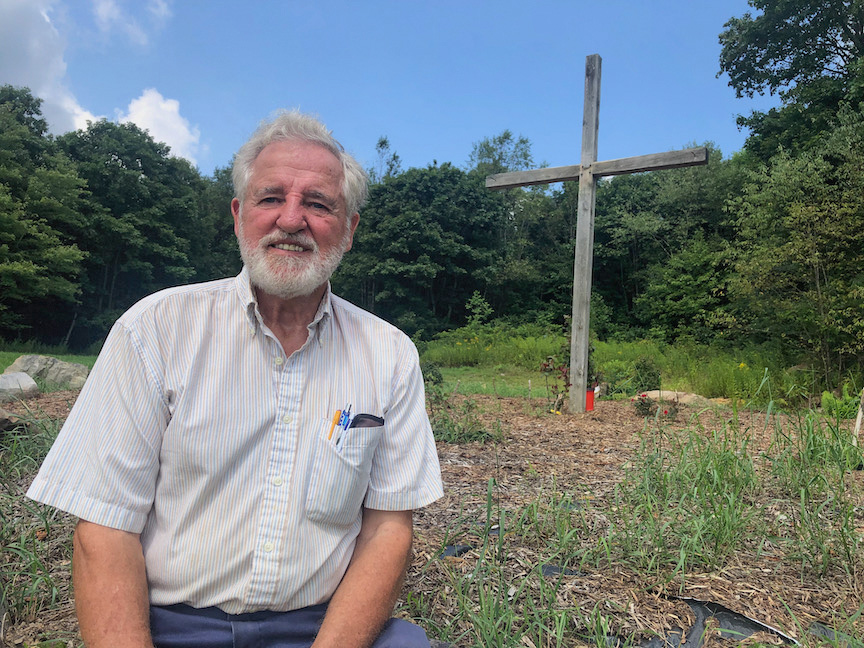
Gardening Green with Doug
Remember Me Rose Garden Near Flight 93 Ready for 20th Year Memorial
By Doug Oster
September 8, 2021
After seeing the disturbing videos of two planes crashing into the Twin Towers on September 11, 2001, Clay Mankamyer headed for work with the same unsettling feeling most felt on that day. When arriving at his first stop, he found no telephone service. A neighbor told him there was a plane crash in Shanksville and as he drove back, was confronted with a terrifying sight.
“I got within about two miles of Shanksville and I saw a column of smoke as far as you could see in the air, rising out of sight, and a helicopter was circling it,” he says.
He called his son who had an off-road vehicle and rushed to the site. Upon arriving, this retired Pennsylvania state trooper was greeted by another trooper who told him there was not going to be any need for search and rescue, there’s no chance of any survivors.
“That led to a lot of frustration, anger, bitterness and sleepless nights, Mankamyer,” said sadly.
As the public converged on the site, the area was overwhelmed with well-wishers, curiosity seekers and others.
A call went out for volunteer ambassadors to man the site and tell the story of the heroism that took place on that plane, a role Mankamyer was more than willing to fill.
At Somerset Alliance Church, where Mankamyer is a member, the pastor and congregation heard buses were coming with family members to the overlook at the crash site.
“He wanted a sign of faith and hope to be placed in front of them just to give them some encouragement," Mankamyer says of his pastor.
A large wooden cross was erected and became the centerpiece of a temporary memorial which was growing each day, as visitors would leave flowers and other items.
“It became a very touching tribute,” he says.
As the National Park Service took over the site, they removed everything, carefully cataloging the items, preparing for a new welcome center to be opened, but the cross disappeared.
Mankamyer was relentless in his search for the cross and finally found it, but when asking, “shouldn’t it have a place here,” was told there would be no religious symbols at the site. “If the cross isn’t coming back, I’m not coming back,” a frustrated Mankamyer said.
He discovered that the families were buying up property around the site as a buffer zone to stop any commercial development around the crash site. Across the street from the entrance to the Flight 93 Memorial, the Remember Me Rose Garden had its genesis and the cross could be displayed there without the issues of being in the park.
“We took the challenge and put the cross here.” There’s also an outline of the Star of David being installed to commemorate four passengers of the Jewish faith.
Mankamyer hopes visitors will understand that faith played a huge role in the events of Flight 93. He even mentions the faith, albeit misguided, of the terrorists who were willing to die for what they believed in. But also the faith of the passengers and crew. Todd Beamer recited the 23rd Psalm before famously uttering “Let’s roll.”
“If you don’t tell that part of the story," he says, "it really doesn’t make any sense,” he says. “It also occupied a prominent place at the memorial with all of the other tributes," he says of the cross. "This one is being excluded.” The cross is now displayed on a raised area overlooking the plantings.
The Compass Rose is the centerpiece of the garden, made of huge rocks found on the property. When meeting stewardesses who were paying their respects to their colleagues, they told him a memorial that could be seen from the air, even at 30,000 feet, would be something fitting and they could point out to passengers. That’s the idea of the Compass Rose, the southern tip of the compass points directly towards the crash site over the ridge across the highway.
A reflecting pool surrounds a fountain and boulders found here are engraved with the names of the heroes of Flight 93. Three hundred perennials in three-gallon pots have been planted throughout the Compass Rose and along Route 30 near the entrance to the garden.
It’s been a long journey for Mankamyer and the team creating the garden since the plan was put into place around 2003. Thousands of dollars worth of roses were destroyed by rose rosette disease which is spread by a mite that is usually infected by feeding on the invasive multiflora rose. The noxious weed has been removed from the area and 425 deep pink ‘Julie Andrews’ roses have been planted. This disease-resistant variety is both tough and beautiful. It won the title of “Most Beautiful Rose of the Century” at the International New Rose Competition in Lyon, France.
“What had overtaken me in the aftermath of this plane was bitterness, anger, resentment, rage,” says Mankamyer. “Some of that’s warranted, but that’s not a good motivation for your life and it’s not healthy. It didn’t fit in with my faith, and what scriptures told me how to respond, with love and caring.”
An Eagle Scout's Service Project
Bill Cenk was drawn to the site for many reasons, but his late son Ryan worked at the garden. He completed his Eagle Scout project by raising funds for 15 teak benches worth about $1,000 apiece along with some of the platforms the benches sit on.
Ryan was diagnosed with a brain tumor at 10 months. Doctors warned the family he might not live through his second birthday, but he was 22 when he passed away in April of 2017.
“Ryan got it into his head that he wanted to honor the heroes of flight 93 for his Eagle project,” his father said with a smile.
Ryan first contacted the office at the official Flight 93 Memorial but was told only government contractors could work at the site. They did though, point him in the direction of the garden and Mankamyer was thrilled that Ryan wanted to add a few of the benches, and astonished when he raised the money for all of them.
Bill Cenk has spent months working with Mankamyer, his wife Mary Alice and a host of other volunteers to have the garden ready for the 20th anniversary on September 11.
“I’m sure Ryan is smiling, bringing a conclusion to the project he started,” Cenk said.
On this day all the perennials, donated by Hopewell Nursery in New Jersey were being planted by him and all the other volunteers. Certified Roses, were sending the ‘Julie Andrews’ roses next, donating them through the nursery.
The garden had been on his mind for years.
“I don’t like unfinished things, I served in the military in the 101st airborne,” he says proudly. There’s something about terrorists attacking our county that doesn’t sit well with me.”
As we stand in front of a sign labeled “Ryan’s Trail,” he explains what he hopes visitors get out of time in the garden.
“I think this is a beautiful tribute,” he says. “The national memorial is hardscape and there’s nothing wrong with that. This is a softscape. This is a place where people can come and more peacefully think, pray, meditate and remember.” He pauses for a second, looking at Ryan’s sign, and then continues. “This is a place of beauty," he says, "a living memorial to the heroes. In a way, it honors the memory of my son at the same time. He put his heart, soul and a lot of cell phone minutes to make this happen.”
Roses Reach Across Cultures
Mankamyer walks to the back of the garden where he’s planted some Mr. Lincoln roses around the cross. He’s spent years trialing different varieties in his own garden to gauge how they do here “on the mountain.”
His mother loved roses and passed on that affection to her son.
“I don’t think there’s a better activity for body, spirit or soul than gardening,” Mankamyer says smiling. “That’s what flowers do, roses especially,” he adds about the power of the blooms. “They send a message of peace (and) perfection. How you can look at that thing, honestly, and not think there’s a creator up above that’s responsible for that? We want to take full advantage of that creation.”
The garden is funded completely by private donations.
“We have about $4,000 collected. We’ve spent about $40,000 on the project," Mankameyer says with a laugh. “We need all the help we can get.”
Over the years Mankamyer has had many moving interactions with family, friends and colleagues connected to the victims of Flight 93.
He found the Steelers shirt in the wreckage belonging to Toshiya Kuge who was visiting colleges looking for a place to play football.
“The T-shirt was actually fairly intact,” Mankamyer says after finding it among the rubble and pulverized frame of the plane. He then met Kuge’s mother Yachiyo, who didn’t speak English. During an event he had a bouquet of yellow roses, broke one off and presented it to her which brought both tears and laughter.
Years later, she returned and pointed to Mankamyer, saying “The rose guy, the rose guy.” Through an interpreter, she was able to tell him that in Japan, yellow was actually a sign for encouragement. “It was way to communicate when you couldn’t have done it verbally,” says Mankamyer.
At a dedication for the garden he met Esther Waino who’s daughter Elizabeth was one of the people who rushed the cockpit. During a phone call, her mother begged her to keep her head down and hope for negotiation.
Knowing that Elizabeth loved butterflies, Mankamyer had 40 monarch butterflies released, expecting all of them to quickly fly away.
“One butterfly went to Esther and landed on her heart,” he says solemnly. “It stayed there through the entire program. Esther was in tears and said, ‘That was my Lizzy, she loved butterflies.’ I’ll never forget it as long as I live," Mankamyer says.
Sitting on a large block of sandstone, the towering cross behind him, he looks over at the nearly completed plantings.
“Just to see beauty come out of those ashes, just to be able to put your hands to something that’s going to bless people and help to tell the story," he says. “I hope it blesses thousands of people and they feel a sense of peace and they see it as a fitting tribute to the sacrifice that was made here. I hope it inspires them and quells some of the anger and hopelessness.”
Find the Remember Me Rose Garden Go Fund Me page here. There’s more information about the garden on how to volunteer there too. The RMRG Facebook page follows the daily work being completed preparing for the 20th anniversary. The garden is located at 6488 Old Lincoln Highway Stoystown, PA 15563. It is across the street from the entrance to the Flight 93 Memorial.
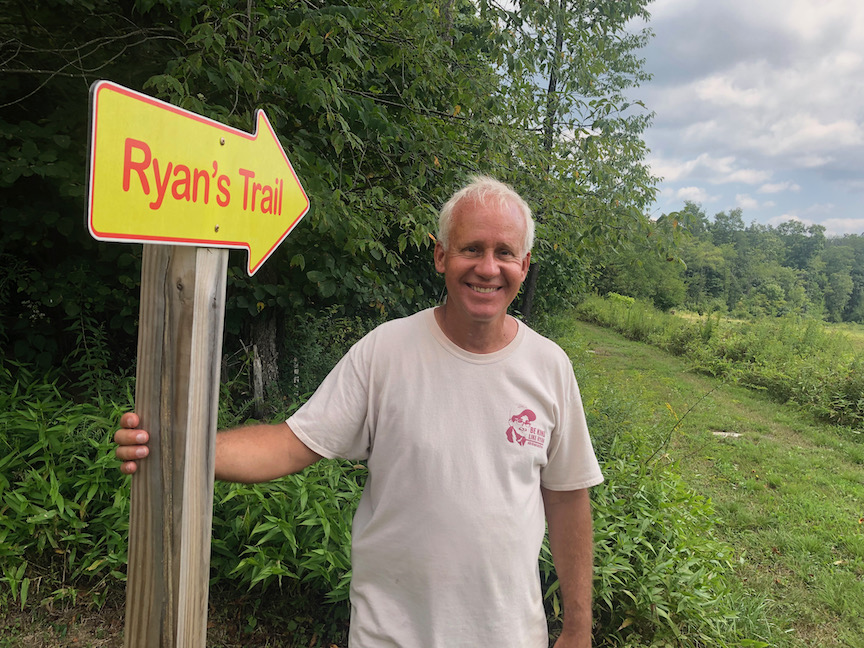
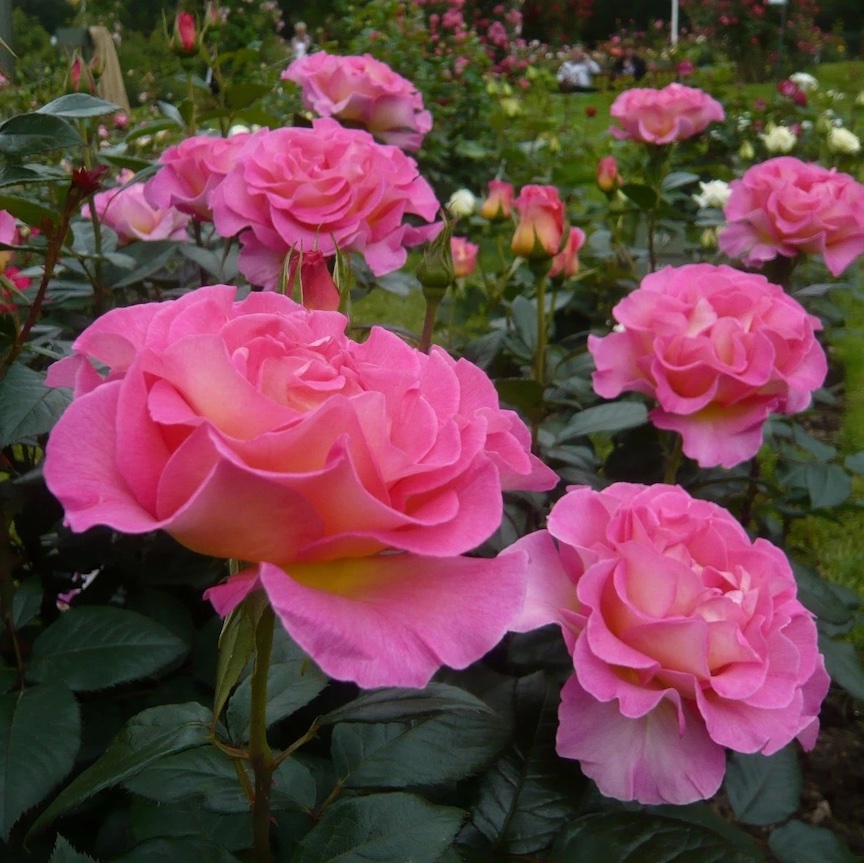
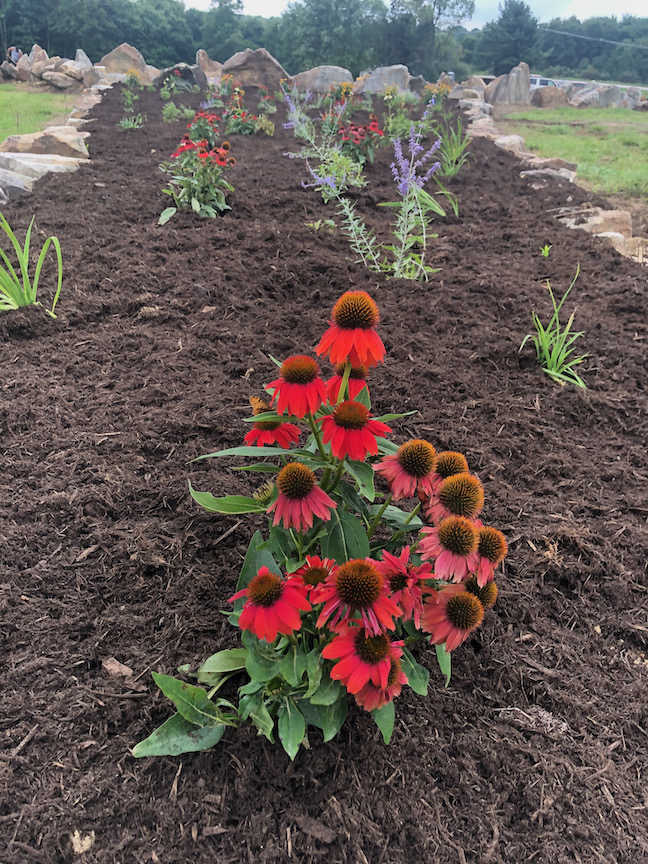
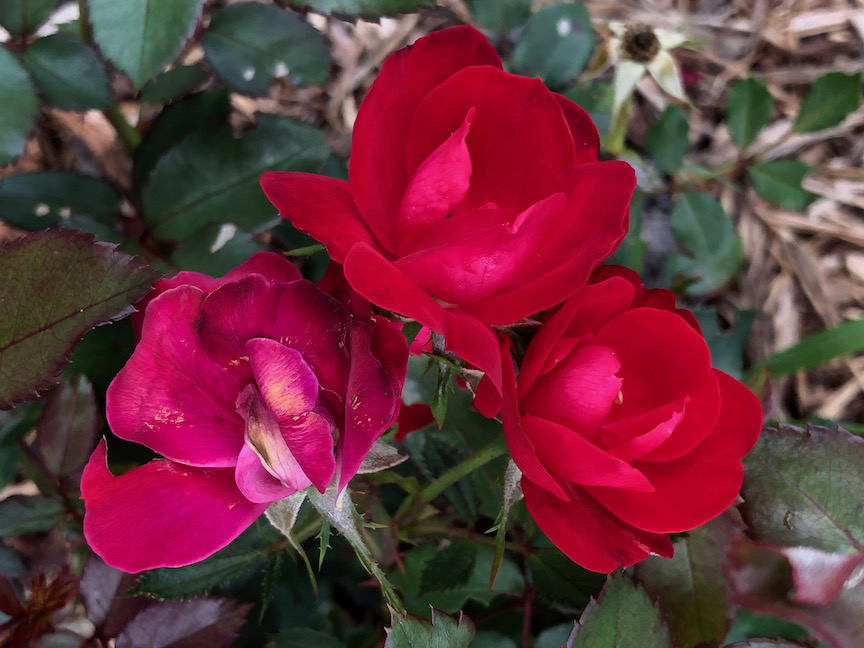
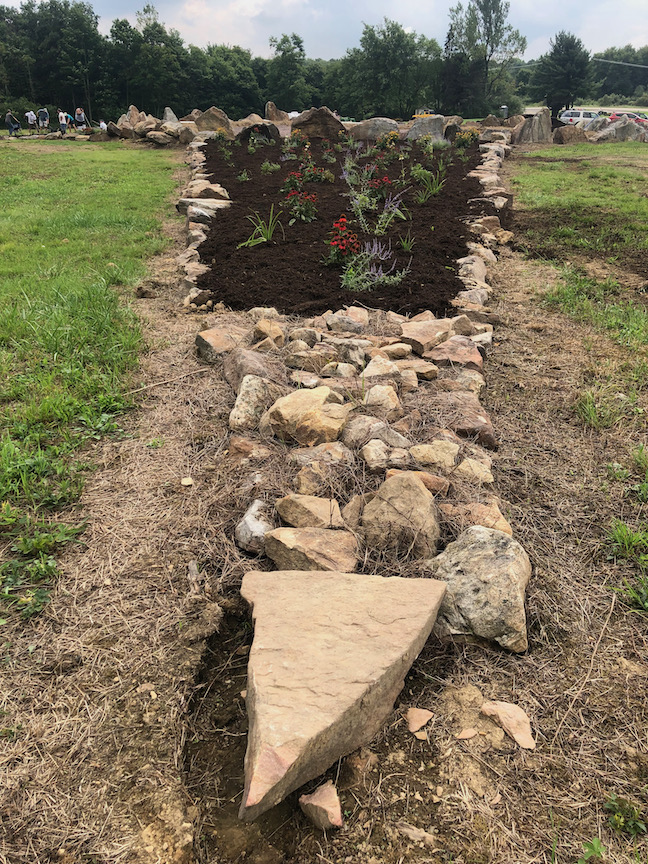
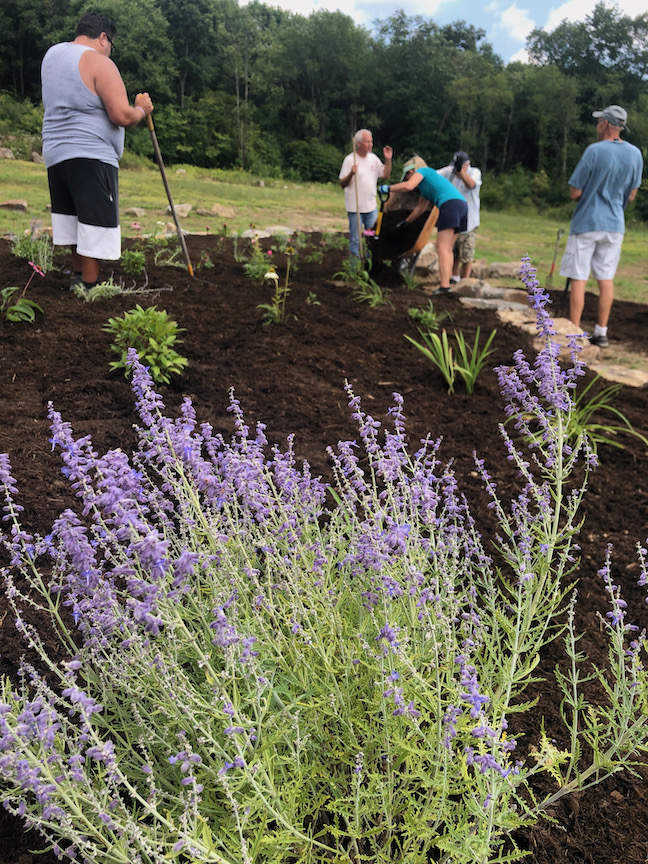
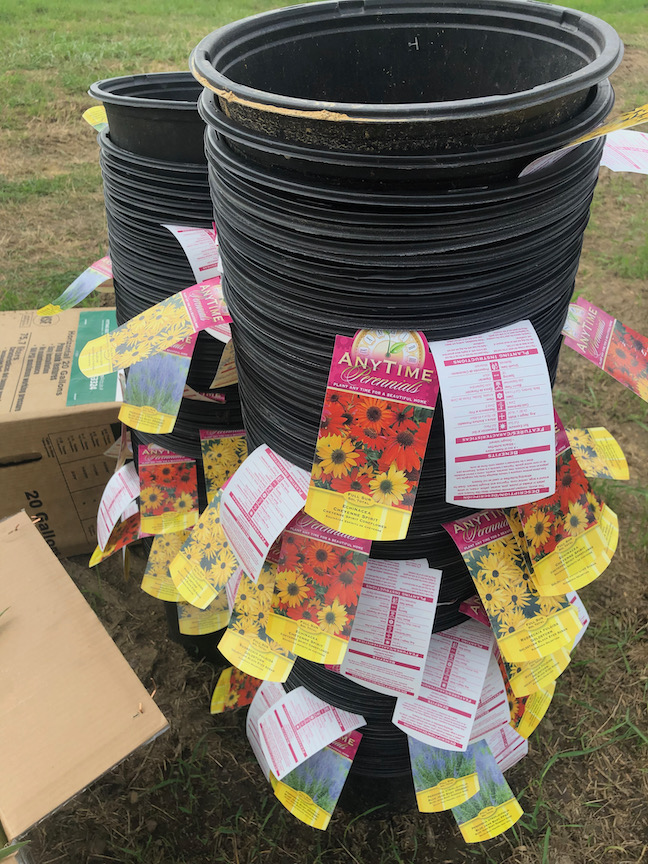

Leave A Comment